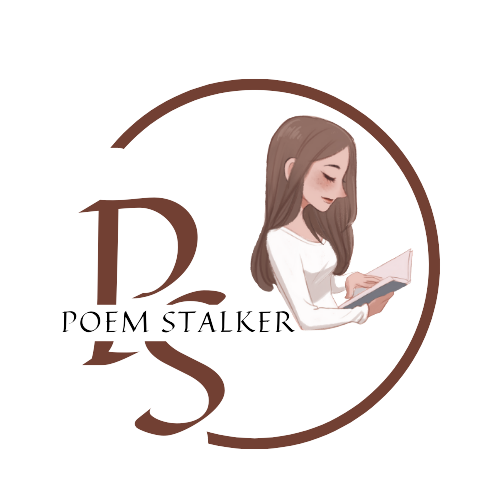Poetic form refers to the structure, style, and organization of a poem. It encompasses various elements such as rhyme scheme, meter, line length, stanza structure, and overall layout. Poets use different forms to shape their poems and convey their ideas and emotions effectively.
Here are some common elements of poetic form:
6.Pantoum
A pantoum is a poetic form that originated in Malay literature and was later adapted by French poets. It consists of a series of quatrains (four-line stanzas) in which the second and fourth lines of each stanza are repeated as the first and third lines of the next stanza.
This pattern continues throughout the poem, with the second and fourth lines of the final stanza being the same as the first and third lines of the opening stanza. This repetition creates a circular and often meditative structure in the poem.
The pantoum’s repeating lines create a sense of rhythm and continuity, and poets often use this form to explore layered meanings and emotions. It can also lend itself to the exploration of themes, memories, and reflections.
EXAMPLE
“Pantoum of the Great Depression” by Donald Justice
Our lives avoided tragedy
Simply by going on and on,
Without end and with little apparent meaning.
Oh, there were storms and small catastrophes.
Simply by going on and on,
We managed. No need for the heroic.
Oh, there were storms and small catastrophes.
Simply by going on and on,
One day we woke up and we were old.
We had not changed. And yet
We had. The future we had dreamed
was gone.
One day we woke up and we were old.
The suits, the ties, the jobs, the coin,
The future we had dreamed was gone.
These things had lost their meaning.
The suits, the ties, the jobs, the coin—
Ah, it was a long trip.
These things had lost their meaning.
Of a long moment of happiness.
Ah, it was a long trip.
Of a long moment of happiness,
The pursuit.
Of the sudden illumination.
The pursuit
Of the sudden illumination,
The hopeless poverty of the future—
I thought of all the struggling people
Of all the struggling people—
One day we woke up and we were old.
The hopeless poverty of the future
Our lives avoided tragedy.
In this excerpt, you can observe the repeating lines and how they create a rhythmic and circular flow to the poem. The repetition allows for different shades of meaning to emerge as lines are revisited, offering a unique and contemplative reading experience.
7.Blank Verse
Blank verse is a form of poetry that is written in unrhymed lines of iambic pentameter. Iambic pentameter is a rhythmic pattern where each line has ten syllables, with emphasis on every second syllable. While blank verse lacks rhyme, it still maintains a regular meter, giving it a natural and conversational flow. This form of poetry has been used extensively in English literature for various purposes, including dramatic works and epic poems.
One of the most notable uses of blank verse is in William Shakespeare’s plays, where it is often used for the dialogue of noble characters. The form allows for a sense of elevated language while retaining a sense of realism in the speech.
EXAMPLE
Act 1, Scene 5 of Shakespeare’s “Hamlet”
I’ll have grounds
More relative than this. The play’s the thing
Wherein I’ll catch the conscience of the King.
In this example, you can see the iambic pentameter at play. Each line has ten syllables with alternating stressed and unstressed syllables. The lack of rhyme allows the language to flow naturally, while the meter creates a steady and rhythmic quality.
Blank verse continues to be used in contemporary poetry and dramatic works as well, offering poets and playwrights a flexible form that balances structured meter with a sense of organic speech.
8.Ode
An ode is a type of lyrical poem characterized by its elevated and formal style, often written to celebrate or reflect upon a person, event, place, or abstract concept. Odes are typically characterized by their emotional depth and complex structure. They can explore a wide range of themes, from praise and admiration to contemplation and reflection.
Odes can vary in structure and rhyme scheme, but they generally have a formal organization of stanzas and lines.
EXAMPLE
“Ode to a Nightingale” by John Keats
My heart aches, and a drowsy numbness pains
My sense, as though of hemlock I had drunk,
Or emptied some dull opiate to the drains
One minute past, and Lethe-wards had sunk:
‘Tis not through envy of thy happy lot,
But being too happy in thine happiness,—
That thou, light-winged Dryad of the trees
In some melodious plot
Of beechen green, and shadows numberless,
Singest of summer in full-throated ease.
O, for a draught of vintage! that hath been
Cool’d a long age in the deep-delved earth,
Tasting of Flora and the country green,
Dance, and Provençal song, and sunburnt mirth!
O for a beaker full of the warm South,
Full of the true, the blushful Hippocrene,
With beaded bubbles winking at the brim,
And purple-stained mouth;
That I might drink, and leave the world unseen,
And with thee fade away into the forest dim:
In “Ode to a Nightingale,” Keats addresses the nightingale and explores themes of mortality, transcendence, and the fleeting nature of human existence. The ode is characterized by its rich imagery, emotional intensity, and reflective tone.
Odes have been written by poets across different eras and cultures, and they continue to be a powerful form for expressing deep emotions and contemplating the profound aspects of life and the world.
9.Ballad
A ballad is a narrative poem that tells a story through rhythmic and musical language. Ballads often have a simple and repetitive structure, making them easy to remember and recite. They typically focus on dramatic events, legends, folktales, or historical events. Ballads are known for their use of dialogue, dialogue attribution, and a strong rhythmic pattern that gives them a song-like quality.
Traditionally, ballads were often accompanied by music and were part of oral tradition, passed down through generations. They are usually written in quatrains (four-line stanzas) with alternating lines of iambic tetrameter and iambic trimeter.
EXAMPLE
“The Rime of the Ancient Mariner” by Samuel Taylor Coleridge
He holds him with his skinny hand—
“There was a ship,” quoth he.
“Hold off! Unhand me, grey-beard loon!”
Eftsoons his hand dropped he.
In this example, you can see the alternating pattern of iambic tetrameter (four stressed and unstressed syllables) and iambic trimeter (three stressed and unstressed syllables). The narrative and dramatic elements are also evident as the speaker engages in dialogue with the “grey-beard loon.”
Ballads have remained a popular form of poetic expression and storytelling, and they’ve been adapted and modernized by various poets over time.
10.Acrostic
An acrostic is a poetic form in which the first letter, syllable, or word of each line, when read vertically from top to bottom, forms a word, phrase, or message. Acrostics can be playful, informative, or meaningful, as they often incorporate hidden messages or themes within the structure of the poem.
Acrostics are a creative way to convey hidden meanings or add an extra layer of depth to a poem. They can be used for various purposes, from sending secret messages to creating mnemonic devices.
EXAMPLE
Dreams
Dancing stars in the night sky,
Reaching out with gentle light,
Every wish, a silent sigh,
A journey into the boundless flight,
Magical realms where hopes unite,
Soaring high on dreams’ pure might.
In this acrostic poem, if you read the first letter of each line from top to bottom, it spells out the word “DREAMS.” This hidden message adds an extra layer of significance to the poem’s theme of dreams and imagination.
Acrostic poems provide a creative way to engage readers and challenge poets to craft verses that hold meaning both on the surface and within the arrangement of letters.

SOME MORAL VALUE OF POETIC FORM
Poetic form can convey and promote various moral values and lessons through the power of language, imagery, and storytelling. Here are some moral values associated with poetic form:
- Empathy: Poetic form allows poets to delve into the experiences and emotions of others, fostering empathy by helping readers connect with different perspectives, cultures, and life situations.
- Beauty: Many poems emphasize the beauty of nature, art, and human experiences. This appreciation of beauty encourages people to find and celebrate the beauty in everyday life, which can lead to a greater sense of gratitude and contentment.
- Reflection: Poetry often encourages self-reflection and introspection. It prompts readers to ponder life’s complexities, their own actions, and the consequences of their choices, promoting self-awareness and personal growth.
- Empowerment: Poetic form can inspire and empower readers. Poems often feature characters or speakers who overcome challenges, face adversity, or express resilience, encouraging readers to do the same in their lives.
- Unity: Poetry has the power to unite people across cultures, generations, and backgrounds. Shared experiences and emotions expressed through poetry can foster a sense of community and solidarity, emphasizing the common humanity that binds us.
- Compassion: Many poems explore themes of suffering, loss, and hardship, which can evoke feelings of compassion and a desire to alleviate the suffering of others. Poetic form can be a call to action for social justice and humanitarian efforts.
- Tolerance: Poetry often celebrates diversity and differences. It encourages readers to accept and appreciate people with varying backgrounds, perspectives, and beliefs, fostering a more tolerant and inclusive society.
- Morality: Poems frequently explore ethical dilemmas and moral choices, prompting readers to consider the consequences of their actions and to make ethical decisions in their own lives.
- Hope: Even in the face of adversity, many poems convey a message of hope and optimism. They remind readers that, despite challenges, there is potential for positive change and a brighter future.
- Preservation of Culture: Poetry often serves as a vessel for preserving cultural traditions, stories, and values. It can pass down the wisdom and moral teachings of one generation to the next, ensuring continuity and cultural richness.
- Environmental Awareness: Some poems focus on the beauty of the natural world and the importance of environmental conservation. They can inspire readers to appreciate and protect the environment, promoting ecological responsibility.
- Self-Expression: Encouraging self-expression through poetry can promote authenticity and personal growth. It teaches individuals to express their thoughts, emotions, and values in creative and constructive ways.
In essence, poetic form serves as a vehicle for the expression and transmission of moral and ethical values. Through its artistry and emotional depth, poetry can inspire readers to contemplate, internalize, and act upon these values, contributing to personal and societal growth.

Life with poetic form
Living a life with a deep appreciation for and engagement with poetic form can be a rich and rewarding experience. Here are some ways in which poetry and poetic form can enhance one’s life:
- Enhanced Language Skills: Engaging with poetry on a regular basis can improve your language skills, including vocabulary, syntax, and figurative language. It encourages a deeper understanding of words and their nuances.
- Emotional Expression: Poetry allows you to express your emotions in a creative and cathartic way. Writing and reading poems can be a therapeutic outlet for processing feelings and experiences.
- Creative Outlet: Poetic form provides a structured but flexible canvas for creativity. Whether you’re writing poems, experimenting with different forms, or crafting metaphors, it allows you to explore your artistic side.
- Mindfulness and Reflection: Poetry often requires careful observation of the world and self-reflection. It can cultivate mindfulness, encouraging you to pay attention to the details of life and your inner thoughts and feelings.
- Empathy and Understanding: Reading poetry from diverse voices and backgrounds can expand your empathy and understanding of the human experience. It exposes you to different perspectives and cultures, fostering a broader worldview.
- Connection to History and Tradition: Poetry has a long and rich history in various cultures. Engaging with poetic forms can connect you to literary traditions and the wisdom of previous generations.
- Communication Skills: Poetry hones your ability to communicate effectively. Writing poems forces you to convey complex ideas and emotions concisely and powerfully.
- Aesthetic Appreciation: Poetic form encourages an appreciation for aesthetics, including the beauty of language, rhythm, and imagery. It can help you find beauty in everyday life.
- Catharsis and Healing: Many people find solace and healing in writing and reading poetry. It provides an outlet for processing grief, trauma, and other challenging life experiences.
- Community and Connection: Engaging with poetry can connect you with a community of fellow poets and poetry enthusiasts. Sharing your work and discussing poems with others can be a source of support and camaraderie.
- Intellectual Stimulation: Analyzing and interpreting poetry can be intellectually stimulating. It encourages critical thinking, interpretation, and the exploration of layers of meaning.
- Inspiration: Poetry can serve as a wellspring of inspiration for other creative endeavors, such as music, visual arts, and storytelling. It can fuel your imagination and lead to innovative ideas.
- Spiritual and Philosophical Exploration: Many poems delve into deep philosophical and spiritual questions. Reading and writing poetry can be a means of exploring existential and metaphysical themes.
- Legacy and Impact: Poetry has the potential to leave a lasting impact on readers and society. Your poems, if shared, can become part of your legacy, touching the lives of others even after you’re gone.
Incorporating poetic form into your life can provide a deeper connection to language, emotions, and the human experience. It encourages self-expression, empathy, and creativity, enriching your life in profound ways. Whether you’re a writer, reader, or both, poetry can be a lifelong companion on your journey.
- How may I help further? let me know in down comments. Easy with www.poemstalker.com
- Want to know amazing facts about history Read now
POETIC FORM POETIC FORM POETIC FORM POETIC FORM POETIC FORM

